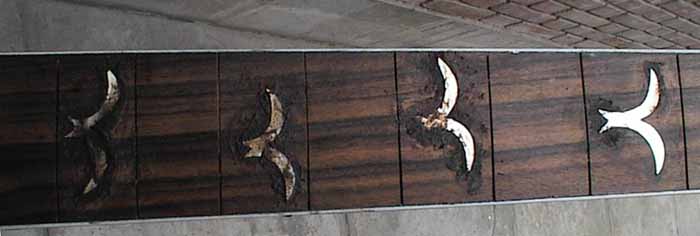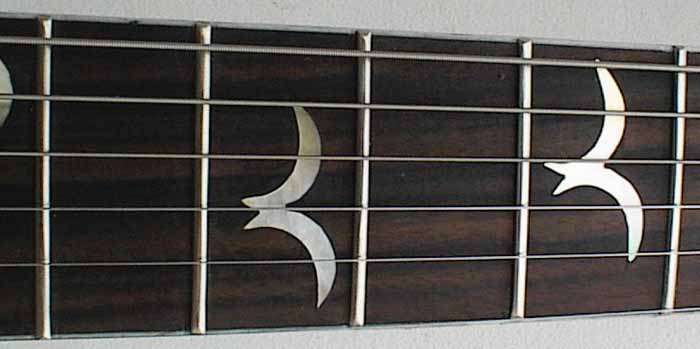


|
An optimist is one who finds an opportunity in every difficulty. A pessimist is one who finds a difficulty in every opportunity."
I used gold mother of Pearl for the inlays. I had difficulty in deciding what kind of inlay pattern I was going to use. I wanted to do something a little different then the typical Les Paul design to make it a bit more original. I also wanted to do something a little more graceful then your typical Scull and crossbones design.
I couldn't find my jewelers saw and blades so what could I do? I got out my Dremel and with the cut off wheel I was able to quickly cut out all the inlays. The problem with that is that you probably waist more material this way then you do with a jewelers saw. For any inlays that are not real intricate this works good. I also used a small sanding wheel and some cheap jewelers files to make the final touches. Important!! WARE SAFETY GLASSES! The Dremel spins around at about 30 thousand RPM's and chances are you will break a couple of the cut off wheels in the process. You can hold the pieces of pearl in a mini vice or a pair of pliers to keep your fingers safe. Don't underestimate the power of these little drills. If it can cut a ball bearing in half it could easily cut your finger off. BE CAREFUL!
After making the inlays here are 2 ways to plot them out on the guitar. One is to trace the inlay on the guitar with a very sharp pencil. The method I used here was to put the inlay in place then paint around it with white out which will leave an image of the shape of the inlay on the guitar. You can also paint on rubber cement then sprinkle on talcum powder. At times, I've dug out the wood to fit in the inlays with just a sharp knife or an exacto knife but it's helpful to also use a Dremel high speed drill with a tinny cutter for carving away the wood. This will work good with a router base to go along with it. I usually do it just deep enough so the Mother of Pearl is slightly higher than the surface of the wood.
On the fret board (because the wood is not black) I used a sharp pencil to trace the outline of each inlay. After cutting out the hole for the inlay, I then glued it in with a mixture of white vinyl glue and fine sawdust from the same wood as the fret board making a dark paste. I put an abundant amount of glue and sawdust first in each hole, then I push in the inlay. The excess glue will ooze out any small spaces where the hole was cut too big filling in the spaces. This will help hide any minor inaccuracies in how the hole was cut. I am usually not afraid to leave a lot on as the glue shrinks quite a bit when it dries. I then later sand off the excess paste and also sand down the Mother of Pearl flat with the fret board. I also made sure there was no glue that got in the fret slots.
|




